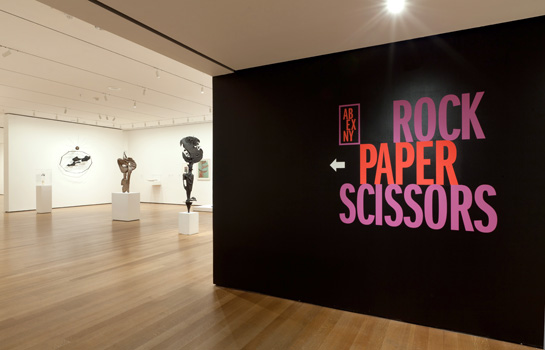You Call That Art? Abstract Expressionism at MoMA
History of Abstract Artistic Movement Celebrated in Hometown of New York
July 23, 2011

Published: October 7, 2010
At least one member of the Museum of Modern Art (MoMA) canceled his membership in protest after viewing Ad Reinhardt’s “Abstract Painting” (1963) in its initial exhibition in 1966. Why? Well, the painting’s black. That’s all. Just a canvas painted black. However, it’s not just a painting any more than black is just a color. It’s one of the most famous Abstract Expressionist paintings ever completed.
MoMA celebrates this monumental artistic movement with “Abstract Expressionist New York,” open through April 25. The galleries display art from the beginnings of Abstract Expressionism to its apex, drawing solely from the museum’s extensive collection, which was started in the 1940s and continues to grow well past the movement’s end in the 1960s.
The exhibition is split between three floors with works arranged thematically rather than chronologically; this well-crafted presentation allows you to immerse yourself in each facet of Abstract Expressionism before moving on to another.
The second floor galleries, entitled “Rock Paper Scissors,” center around sculpture and works on paper. It’s a bit of a tease. When the average viewer thinks of Abstract Expressionism, they don’t think of lead sculptures and ink-on-paper; they think of simplistic oil colors on canvas, the expressive, biomorphic abstractions that suggest meaning rather than state it. So it’s shocking when you enter these galleries to see the small black and white drawings mounted on white walls behind simplistic sculptures.
You might be tempted to overlook this part of the exhibition due to its monochrome simplicity. But it’s a fantastic opportunity to see into the minds of Abstract Expressionist artists, the sources of their inspiration, and their camaraderie.
Didn’t think a sculpture of a Pollock action painting was possible? Check out Herbert Ferber’s aptly titled “Jackson Pollock” from 1949—it’s one of the first things you see in “Rock Paper Scissors.” Ferber’s freestanding lead “brushstrokes” are reminiscent of Pollock’s distinct manner of painting.
The third floor exhibition, entitled “Ideas Not Theories,” is much more diverse than “Rock Paper Scissors.” Here is a variety of media: abstract films, music, architectural plans, sculpture, journals, drawings, paintings and poetry. The art is expressive, with an emphasis on the process of creation. Many of the painters of this movement believed the creation of art was, in fact, art itself, so it’s not uncommon to see blunt, expressive brushstrokes or heavy globs of paint sticking out from the canvas. You never forget that a human being created the art you are experiencing. It’s very personal and emotional, as the artists intended it to be.
At one point, you’ll find yourself standing in front of a film projection. It’s a loop of three of Len Lye’s abstract films, “A Colour Box” (1935), “Colour Flight” (1937) and “Swinging the Lambeth Walk” (1939), and it’s mesmerizing. Lye blends music and color into short clips that dazzle the eye. A red flash across the screen accompanies an unmistakably “red” bit of music. This presentation serves as a reminder of the connection between different forms of expression, film, song and color in this instance, and the universal emotions that such expressions evoke.
The fourth floor’s “The Big Picture” is home to the major leaguers. Rothko, Pollock, Reinhardt and Newman dominate their own galleries but are never isolated from each other completely. These are the paintings that provoke cries of “That’s not art!” In fact, in reference to Pollock’s “Number 1A” (1948) one of my fellow viewers muttered dully, “drugs and rage is all this is.” I was almost inclined to agree. A web of color grabs the viewer and drags them into dizzy insanity. Stare at it long enough and you forget where you are. However, unlike the disgruntled stranger, I think the distressed tone of the painting makes it more powerful.
Ad Reinhardt’s controversial “Abstract Painting” is in this gallery, isolated in the middle of the room. It’s clearly black, but after a few moments you begin to see different shades. Even a seemingly definitive “color” isn’t absolute. Don’t judge anything based on first impressions, Reinhardt seems to say, or you may miss out.
Three floors of “Abstract Expressionist New York” give viewers hundreds of chances to engage in a dialogue with this influential Modern Art movement. Standing in front of the works of art, you experience them as they were meant to be experienced. You truly gain an understanding of what Abstract Expressionism was all about—a deeply personal, thought provoking and pleasantly cathartic experience.









